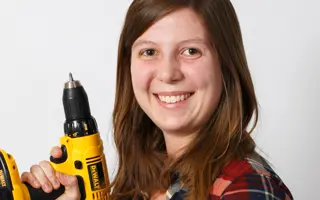News
James Dyson Foundation scholar looks like an engineer
Torey Kocsik didn’t understand what being an engineer meant until she was well on her way to becoming on

“Growing up, my dad was probably the biggest influence on my decision to study engineering in college. His background is in chemical engineering, and even though I didn’t know what he did at work all day, I watched what he liked to do in his free time and started to put the pieces together. My dad was—and is still—always tinkering with new projects; he put together a workroom in my childhood house with all sorts of tools and even a bandsaw – how many kids have access to that at home?”
After building elaborate Lego spaceships and science fair projects with her dad in elementary school, Koscik had realized her skills and passion for math and science as a high school student.
“Engineering seemed like the logical next step for me,”
During her first semester as a freshman at University of California, Berkeley, she took a mechanical engineering seminar where she got a crash course in fluid dynamics and computer aided design. In that course, she designed and modeled a wind turbine, 3D printed it, and then tested her model in a real wind tunnel.
“It was such a cool experience, and I knew right away that I wanted to study engineering design.”
But Kocsik realizes that her engineering success story is unfortunately not the norm.
“I was lucky enough to grow up in a family that strongly values science and didn’t think twice about women in STEM fields, but not all girls grow up in this encouraging of an environment. Unfortunately, there’s still a big stigma around women in STEM fields and I think that scares a lot of girls from continuing along the path.”
Kocsik added that since there are a lot fewer women engineers and scientists, they tend to stand out.
“I remember being one of only three girls in my AP Calculus class in high school. By college, there were multiple times where I was the only girl in a 50-100 person class. It’s not easy to keep pursuing something—especially something so hard—when you’re in the minority. I think a lot of girls who might really enjoy science and math start down an engineering path but get discouraged by the overwhelmingly male culture, where there aren’t that many familiar faces.”
So, how does Kocsik think we can encourage more females to follow engineering career paths?
“It’s a lot easier to engage in your studies and your life when you feel connected to the people around you.Elementary and middle schools need to play a big role in showing girls how fun engineering can be to get them get excited about it from an early age.”
She added that girls should work in teams with other girls so that instead of feeling outnumbered, they feel more confident to speak up and engage in their learning.
“There are so many great opportunities these days with learning tools like affordable 3D printers, easy-to-learn CAD software, and free online coding courses. I think young girls—and boys—should have the chance to try these tools in school and get the chance to work on real projects about things they care about, whether it’s 3D printing a toy or writing a simple app to display the middle school lunch menu.“
Kocsik, who has a bachelor’s degree in Mechanical Engineering, has just completed her first year at Northwestern University Segal Design Institute where she is working on her Master of Engineering Design and Innovation. There, she is a 2015 James Dyson Foundation engineering scholarship recipient.
“I do think things are changing for the better with regards to the female engineering experience, but there needs to be a critical mass of women engineers before we start to view it as the norm, and not as an exception.”
